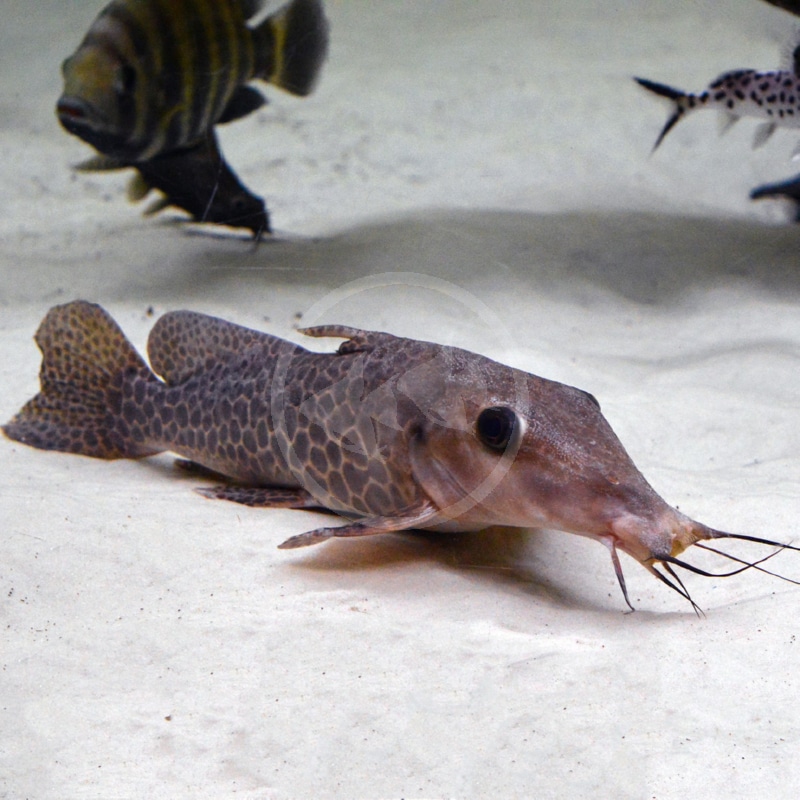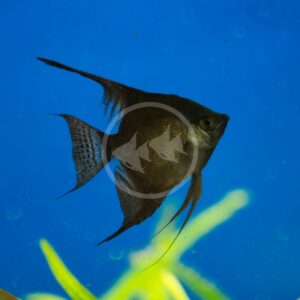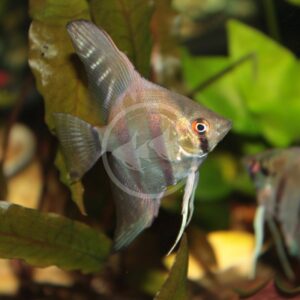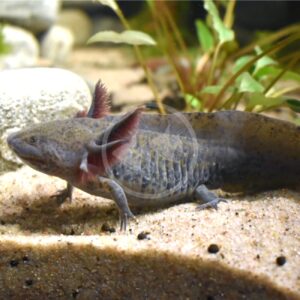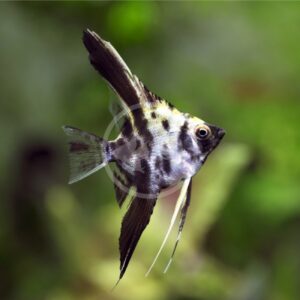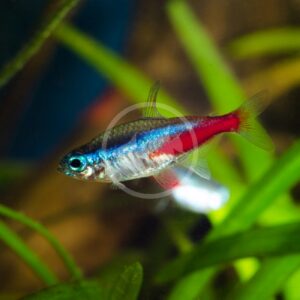Care Level: Advanced
Temperament: Peaceful
Live Plant Safe: No
General Description: The Giraffe Catfish is found widely throughout shallow rivers and lakes of west and central Africa. Often sold as juveniles or subadults, this catfish species is truly a river monster that is best left admired in the wild, public aquaria or to the few extremely dedicated aquarists that have the facilities to house an adult Giraffe catfish. On average, an adult Giraffe catfish can grow up to 30″ in length. While a Giraffe catfish is not likely to obtain this size in captivity, it will still grow much too large for the majority of hobbyists making this fish a serious commitment in all aspects of aquatic husbandry (please see ‘Diet and Care Requirements’ below). For its enormous adult size however, the Giraffe catfish is somewhat of a gentle giant. The Giraffe catfish is aptly named for its distinct mottled pattern that is similar to a giraffe. The color and patterning of Giraffe catfish varies considerably due to its large native range in the wild as described above.
Diet Requirements: Giraffe catfish are omnivorous detritivores, meaning that they will consume just about anything that falls to the substrate. Offer options such as frozen brine shrimp, mussels, krill, and prawns. Foods containing Spirulina algae are a plus. Appropriate frozen food options will vary depending on the size of your specimen. Giraffe catfish may accept large sinking pellet foods, but these should not make up the majority of their diet. Live earthworms are a favorite treat. Variety is the spice of life in order to maintain color, immune function and longevity of your fish. Giraffe catfish are notorious for becoming greedy and will often learn to “beg” for food, but feeding only once a day should be exercised for juveniles. Adult specimens may only need to be fed once a week. Obesity is a big problem in large catfish species, which will only be a detriment to their health in the long run.
Care Requirements: A minimum 90 gallon aquarium is needed at the very least for a small Giraffe catfish. A more subadult specimen will require a 180+ gallon aquarium. The realistic long term accommodations for a juvenile Giraffe catfish to mature into an adult requires a volume of water of at least 400 gallons – which still barely allows for natural movement as it would freely in the wild. This catfish cannot be put into a biologically immature aquarium. Weekly water changes are necessary to keep water parameters favorable (Nitrates < 30 ppm). Equipping the aquarium with several canister filters, or a sump system, is also needed to maintain a healthier environment for this species and combat the amount of waste it produces. A Giraffe catfish will be relatively indifferent to decor, especially as an adult, but some stacked rocks to create caves to hide, or driftwood, may add some pizzazz to the aquarium. A lot of unobstructed and open swimming space should be of priority, and the aquarium needs to be well oxygenated. Dim lighting will encourage this species to venture more readily out in the open. A sandy or fine substrate is needed, because gravels can be ingested by more mature specimens and get caught in their delicate gill tissue. Giraffe catfish are compatible with a wide variety of larger, peaceful fish; tank mates should not be aggressive at all, or too small to be potentially consumed. Certain African biotope species, including Congo Tetras (Phenacogrammus interruptus), would make for a great display with a Giraffe catfish. Recommended water conditions, 72-78° F, KH 4-18, pH 6.0-7.8.
Purchase Size: Small: 3” to 4”
Note: Your item may not look identical to the image provided due to variation within species. Purchase sizes are approximate.


